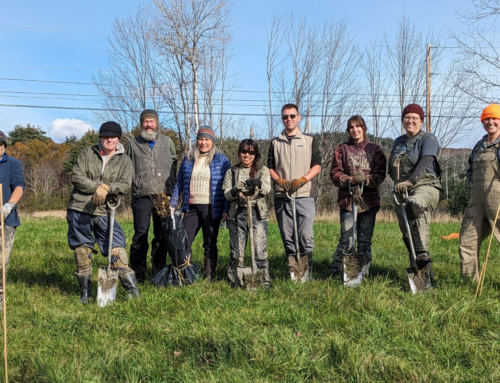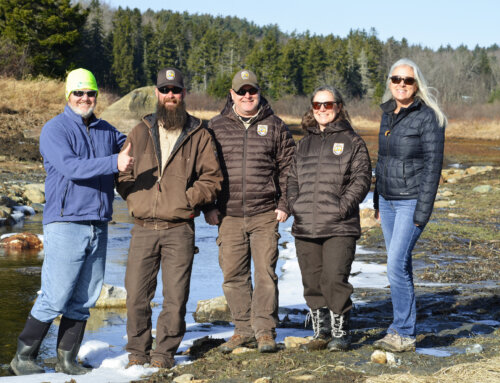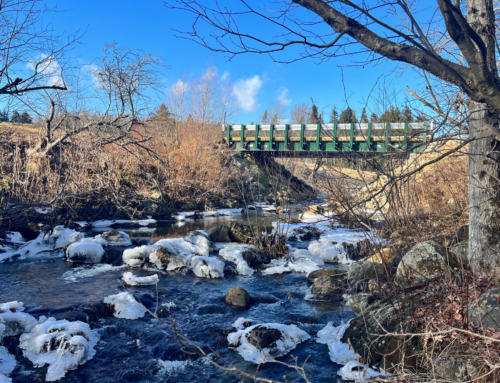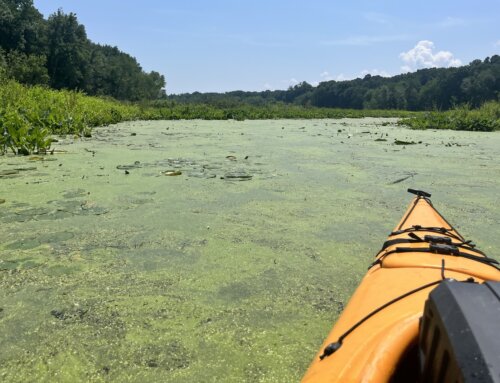In the summer Currents & Eddies newsletter, you learned how and why adult sea lampreys migrate to our rivers from the oceans each year. While that certainly is the most noticeable part of their time spent in our rivers, it’s really just the beginning of their visit. The adults came to our rivers with just one purpose in mind – spawning (laying eggs) and growing the next generation of their ancient species. It’s with those babies that we begin part two of this story.
For 10 – 14 days, the lamprey eggs are housed in the nest (aka redd) made by their parents. It’s an oval nest made of rocks with a small rock-dam on the downstream-side that keeps the eggs from washing downstream. Their parents labored to make this nest as one of their last living acts. They carefully used their mouths to move stones until the nest was just right. The design of this nest creates an area of still water within the flowing stream, which allows the eggs and sperm to connect. These nests, which can be up to a few feet round and up to 10 inches deep, actually improve the structure of stream beds. Many other fish and aquatic insects benefit from the lamprey’s nest-building.
The lamprey eggs hatch into small larvae known as ammocoetes. These larvae burrow into the mud and filter-feed on algae and small organisms. At this stage, they lack the round, tooth-filled mouth their parents have. They remain in freshwater for five to ten years, drifting farther downstream each year. There comes a day when the ammocoetes (lamprey larvae) fully transform into adult lampreys. That’s when they travel back to the ocean to live for another couple years before returning to the rivers once again to spawn. Lampreys, unlike shad or salmon, do not necessarily return to the same river they were born to spawn. Instead, they are drawn to particular rivers by how much pheromone they can smell coming from the lamprey larvae in the river!
Now you see that lamprey actually spend the majority of their lives in freshwater rivers where they are not feeding on fish at all. During that time, our rivers serve as a nursery allowing them to feed and grow. It doesn’t matter if they grew up in our river or not – they found a home here and a place to raise their young. That’s something many of us can identify with.
So next time you see a sea lamprey, don’t fear it. Instead wish it well on its journey to restore the population of this important fish in the Connecticut River basin.
PHOTO: Our rivers are a nursery for baby lamprey for years before they move to the ocean. During this time, lampreys are filter-feeders and lack the tooth-filled mouth that adults have. Illustration by Paul Young.







